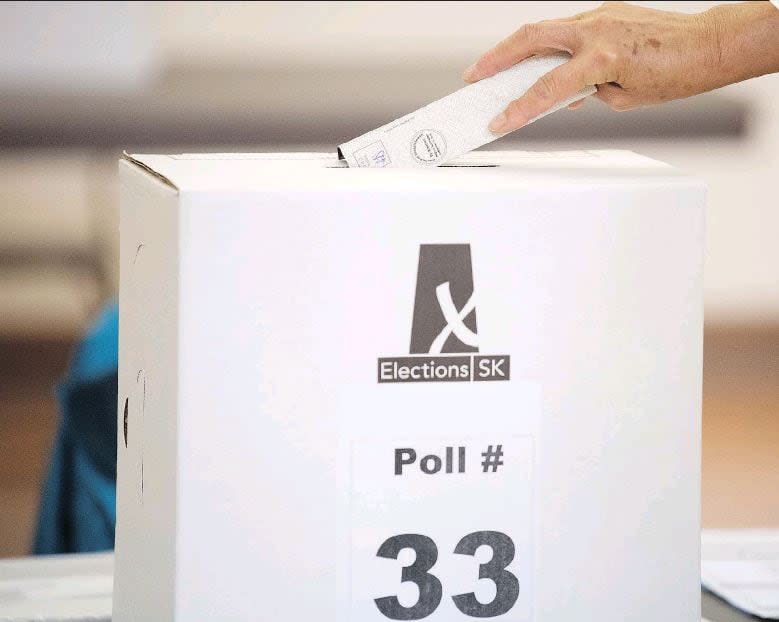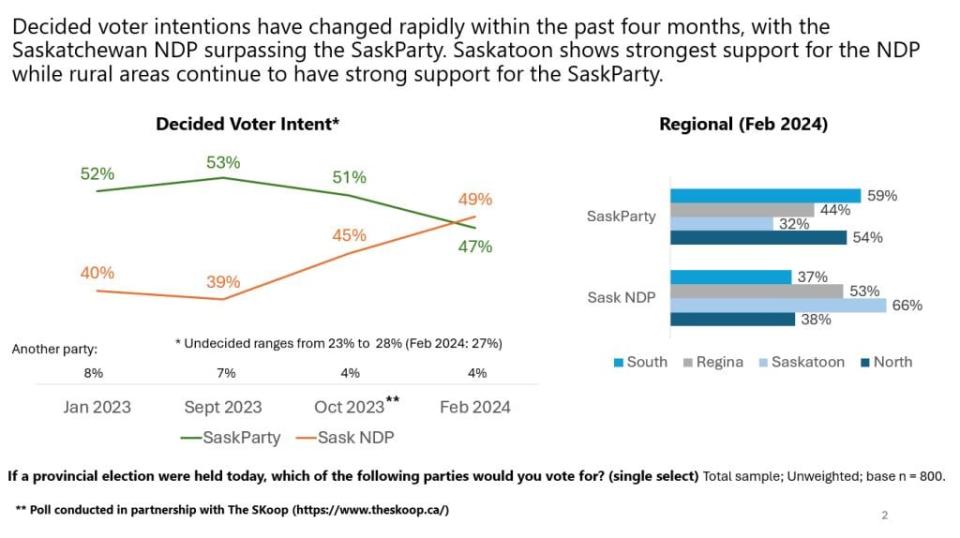Experts weigh in on latest Sask. polling results showing slight NDP favourability

The latest poll numbers show the NDP are a small favourite if a provincial election were called, but experts say not to jump to any conclusions based on the poll.
On Friday, a Saskatoon-based market research firm called Insightrix released a new poll that asked it's sample which party they would vote for if an election were held on that day.
Forty-nine per cent of people, who were polled between Feb. 6-8, chose the NDP and 47 per cent were in favour of the Saskatchewan Party if they were to vote in an election.
The polls' sample size number was 800 panel members, which the firm says represent all regions of the province.
There was a 10-point increase for the NDP since September of last year, and a six-point decrease for the Sask. Party over the same period.
Insightrix said a margin or error is not applicable because the poll was conducted online and is considered a "non-probability proportion sample." But it does offer an estimated margin of error of plus or minus 3.5 percentage points, 19 times out of 20 for questions answered by all respondents.

The poll shows a ten-point increase for the NDP since September 2023, and a six-point drop for the SaskParty during the same period. (Insightrix)
Éric Grenier who previously worked as a poll analyst for CBC from 2014-2021, and now writes on Canadian elections and the latest polls for The Writ, says he was surprised by the results.
"This Sask. Party has been such a strong party since it's been in power. It is the longest serving government in the country currently in power right now," Grenier said.
"The last time we did see some polling where the NDP and Sask. Party were more or less tied or the NDP had maybe edged ahead, Brad Wall announced his resignation not very long afterwards."
Rural and city divide
The poll data shows the NDP ahead in both Saskatoon and Regina, but the Sask. Party ahead in north and south regions — rural areas and smaller cities.
In Saskatoon, 66 per cent of respondents said they would vote for the NDP compared to 32 per cent for the Sask. Party.
That flips when looking at 59 per cent in the South region saying they would cast a ballot for the Sask. Party, while only 38 per cent would vote for the NDP.
Grenier said these numbers suggest the NDP could do well in Saskatoon and Regina, possibly even sweeping them both, but the rural seats are crucial to win an election.
"They [NDP] would have to start winning some seats in the rural areas," he said.
"Even with these kinds of numbers, you would still expect that this Sask. Party could pull a majority government out of it just because of how many seats are in the rural parts of the province."
Future polls important
Grenier said it's interesting data, but the more important factor to look for is if it is consistent in future polls.
"It makes me now want to see the next set of numbers even more," he said.
"Whenever you have this kind of new development that's happening in polling, you always need to see if it's just a blip or if it's something real."
Daniel Westlake, an assistant professor in the political studies department at the University of Saskatchewan agrees with Grenier.
According to Westlake, the reality of polling is difficult in a small province like Saskatchewan, which means it can be hard to know where public opinion is at.
"It can be hard to know if a particular poll is representative of the trend or just an outlier," said Westlake. "It's interesting, but I wouldn't jump to conclusions based on this particular poll that we've seen."
Westlake added that the sample size of 800 is a solid number for polling in a province the size of Saskatchewan, but it really comes down to how representative the samples are.
The latest polling data from Insightrix does not show specific information on how representative the samples were.

